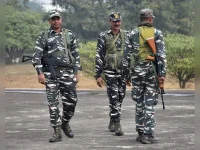
The Rs 10 lakh bounty offered by the National Investigation Agency (NIA) proved instrumental in the successful elimination of Lashkar-e-Taiba (LeT) terrorist Basit Dar during an encounter in Kulgam district on Tuesday.
Dar, a resident of Redwani, had been evading authorities since 2021 and was associated with both the LeT and its frontal organization, The Resistance Front (TRF). He was a prime suspect in a series of civilian killings that took place in October, making his elimination a significant achievement for security forces.
The use of bounties has often been a controversial tactic in counter-terrorism operations. However, in this instance, it appears to have played a significant role in achieving a positive outcome. The reward encouraged local residents to come forward with information, demonstrating the potential of financial incentives in mobilizing community support against terrorism.
This operation also emphasizes the importance of human intelligence in counter-terrorism efforts. While technology and surveillance play crucial roles, information from local sources remains invaluable in tracking and apprehending elusive targets like Basit Dar.
Open-source information reveals that the use of bounties has been employed in various counter-terrorism operations worldwide, with varying degrees of success. In this case, the bounty offered for Basit Dar's capture led directly to his elimination, highlighting its effectiveness in specific scenarios.





